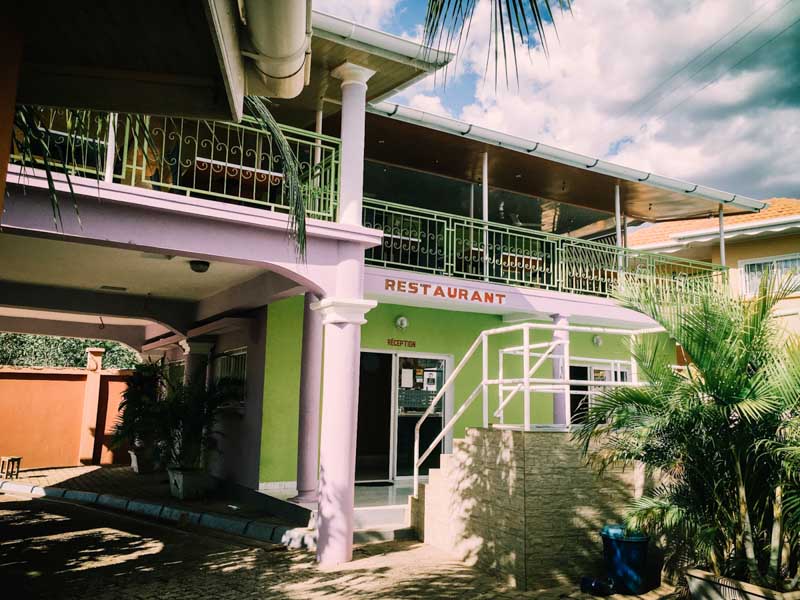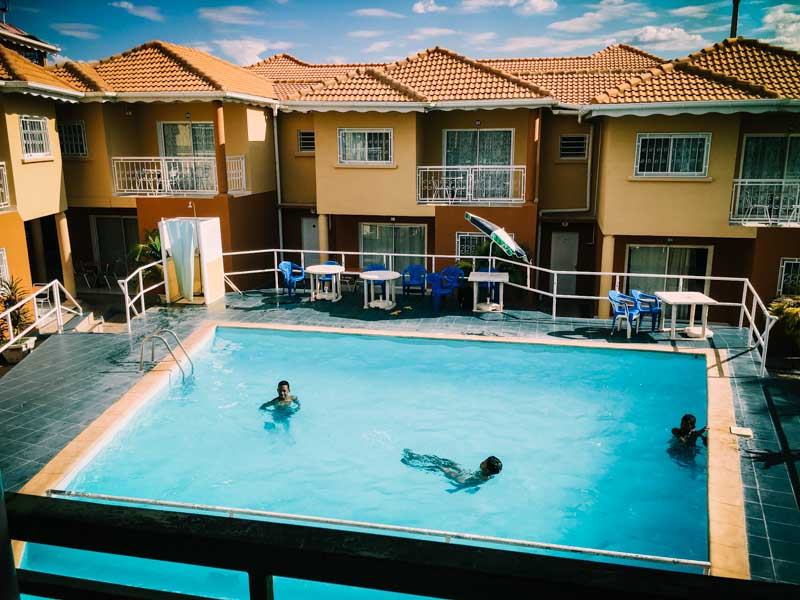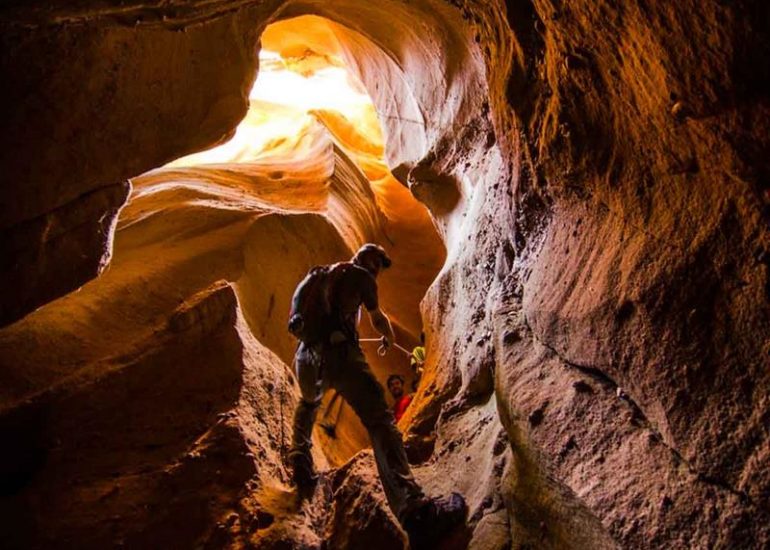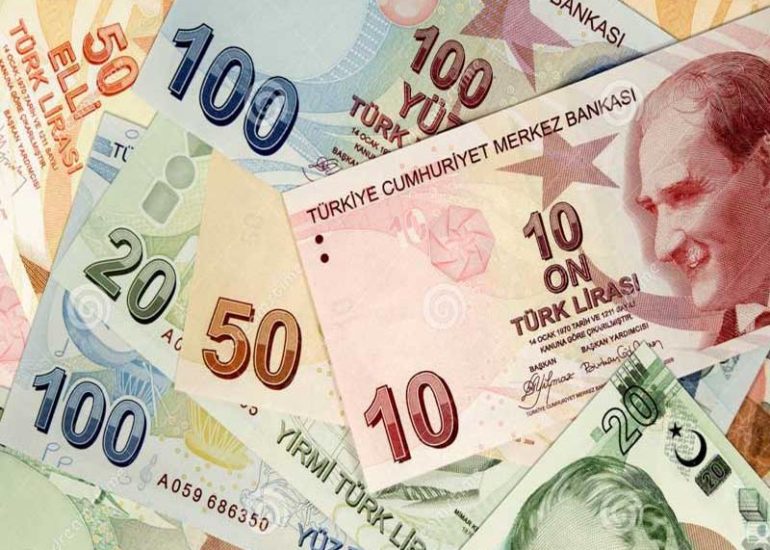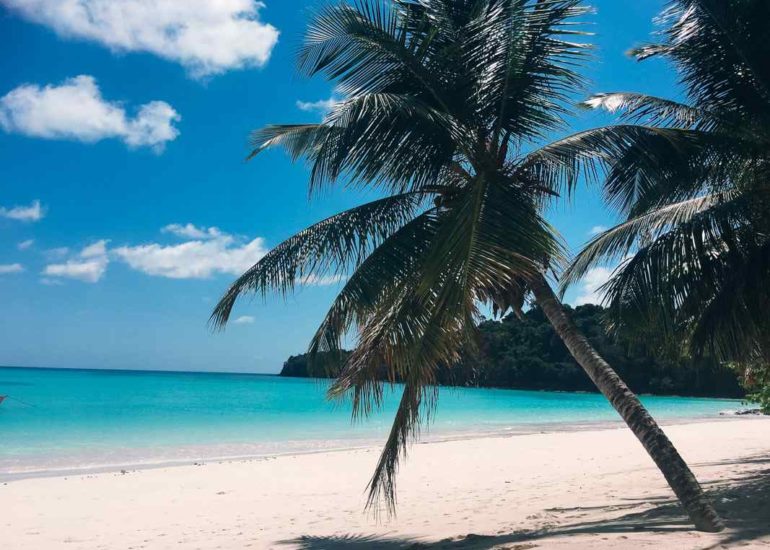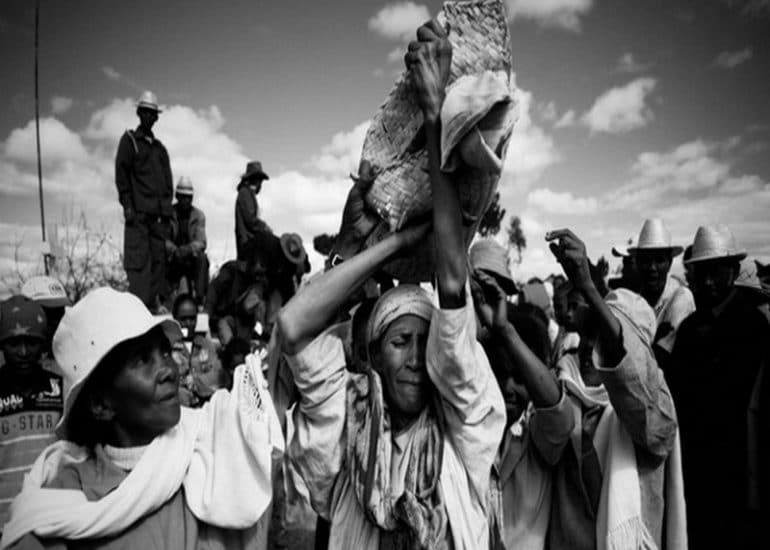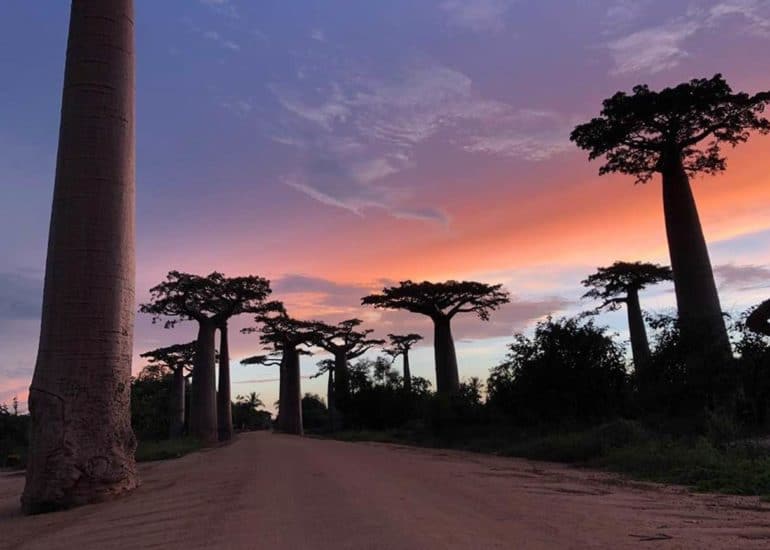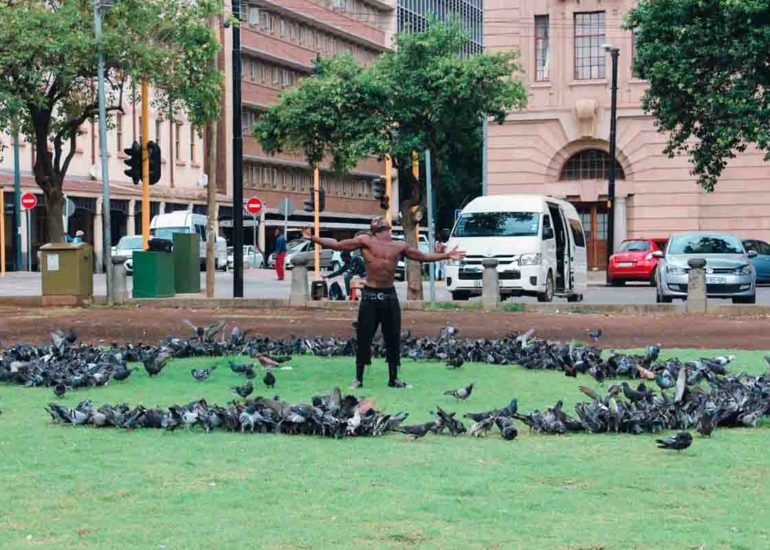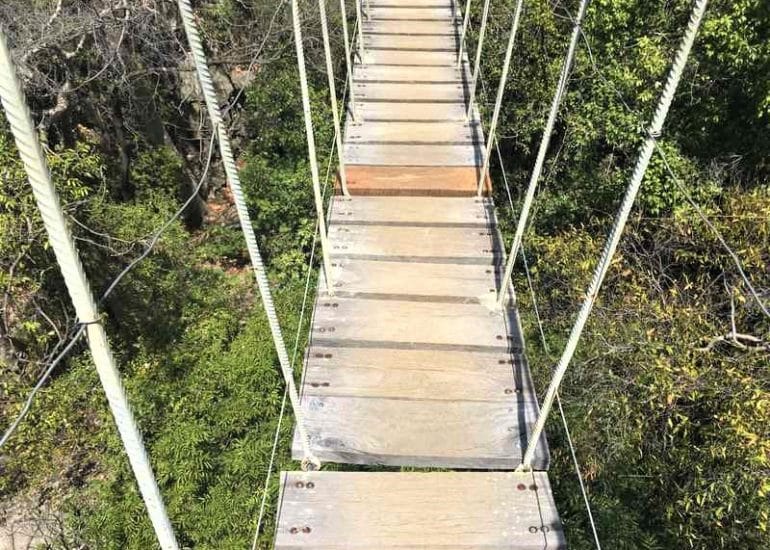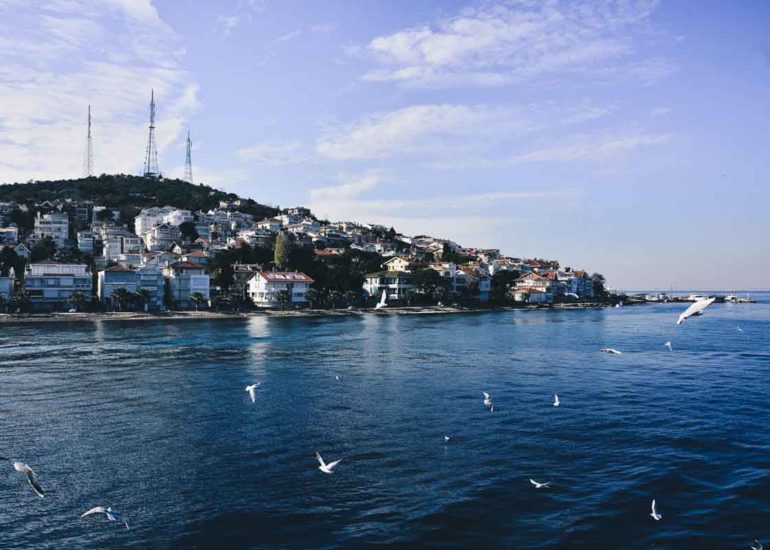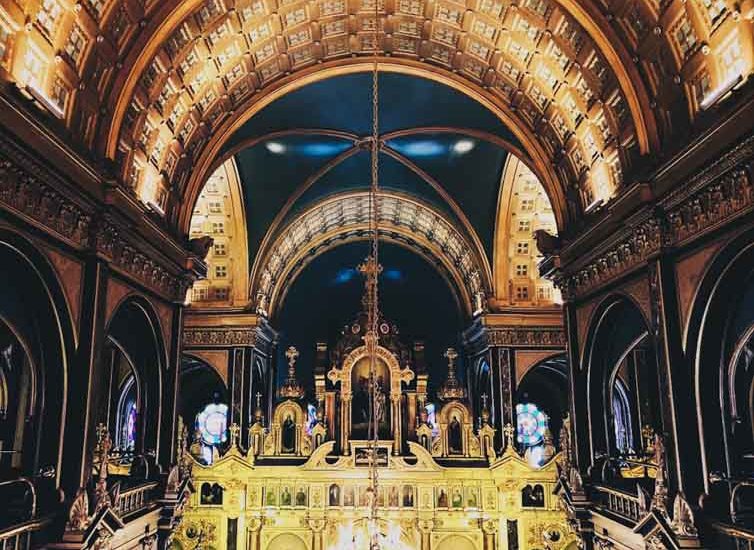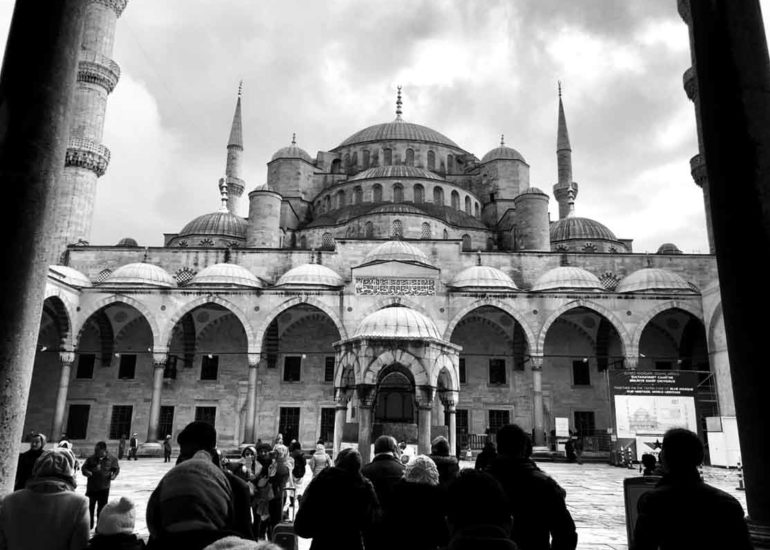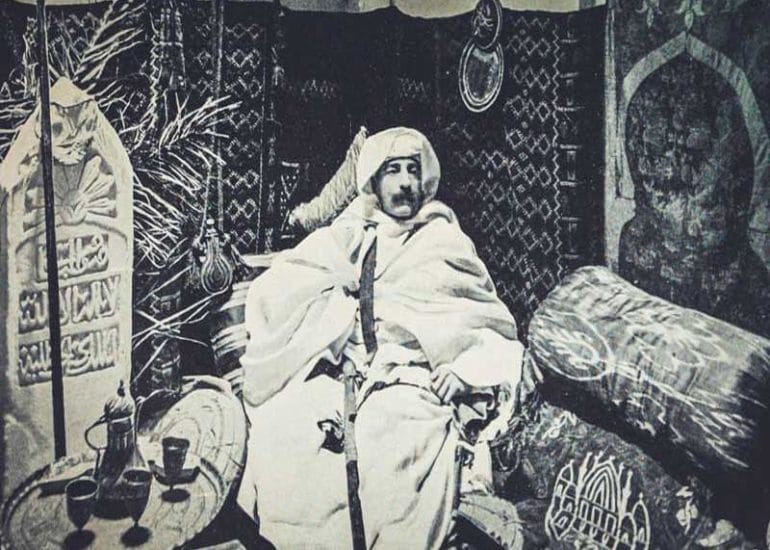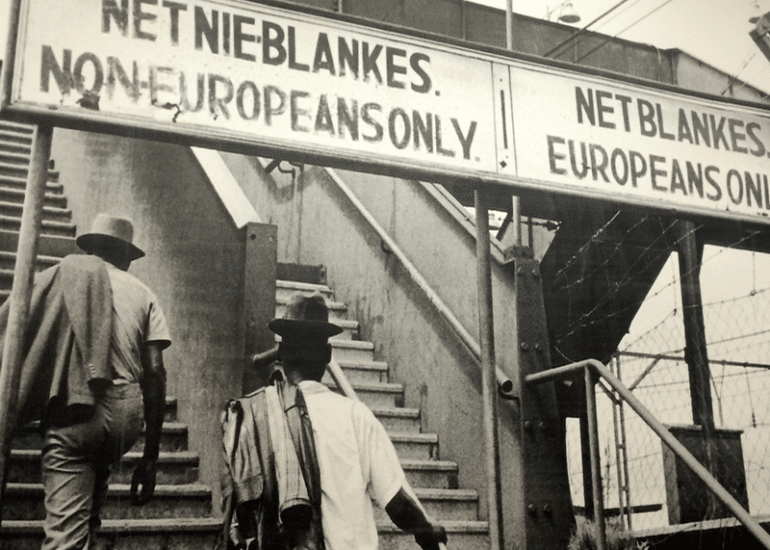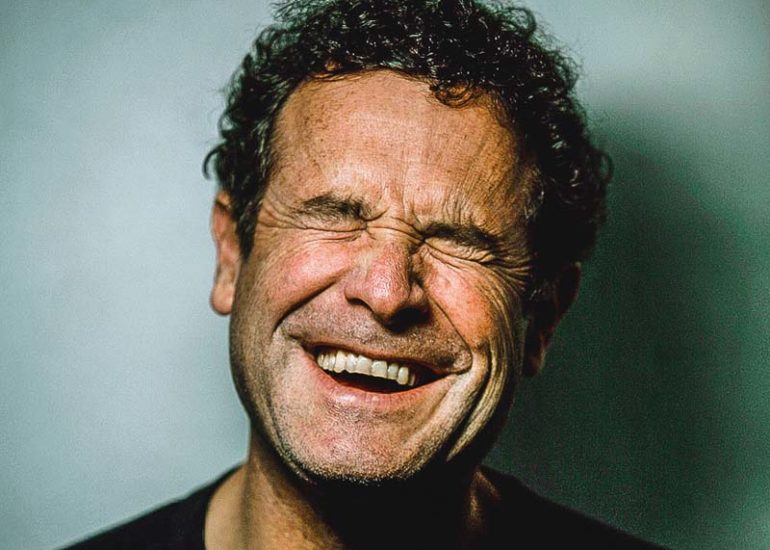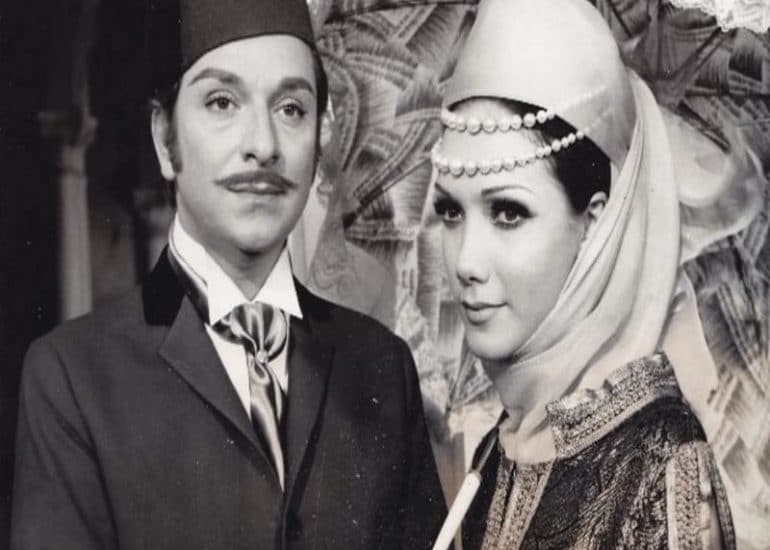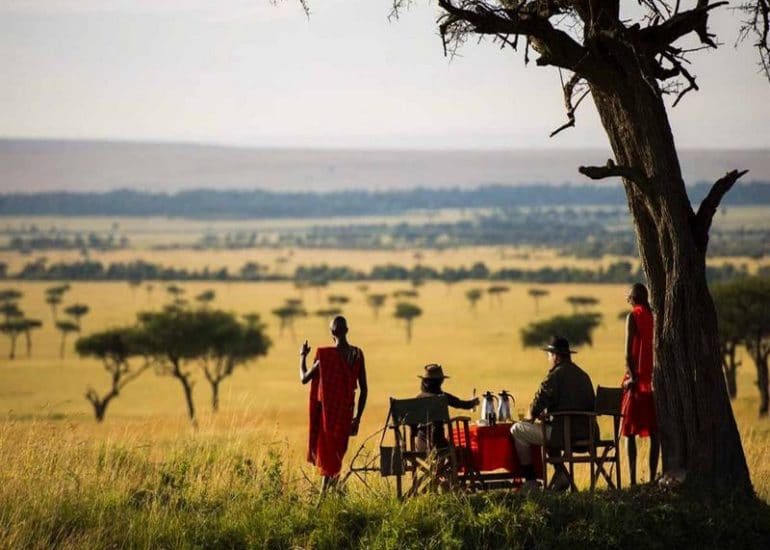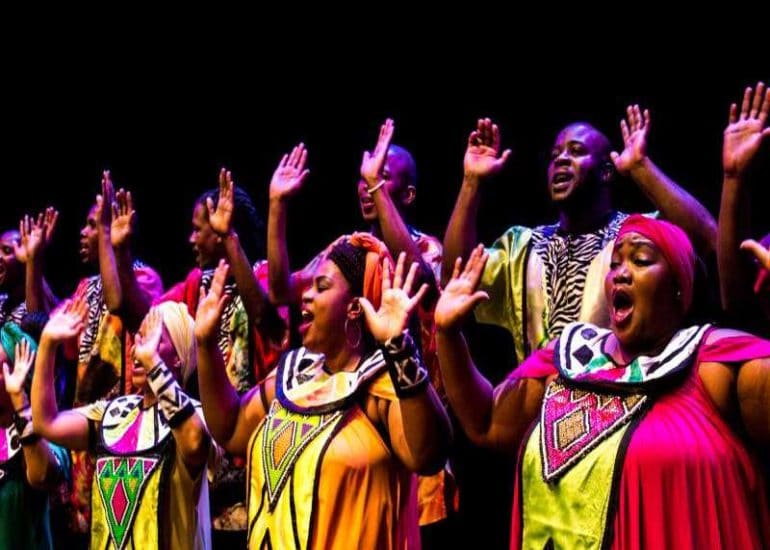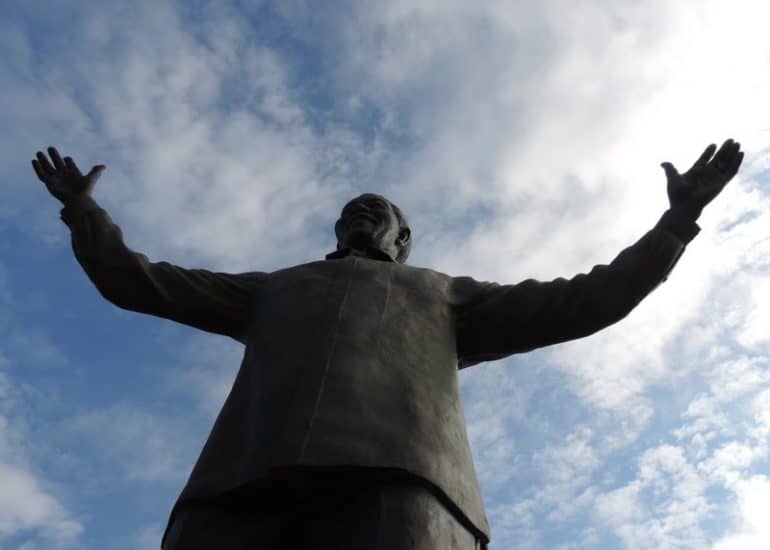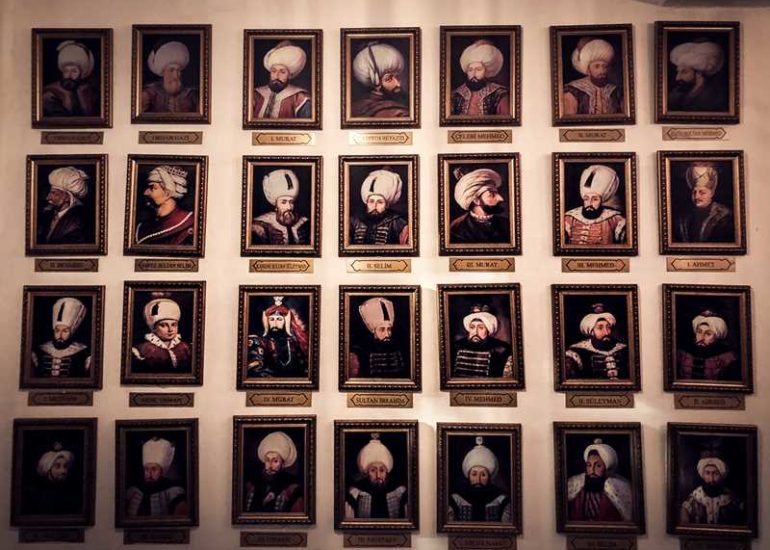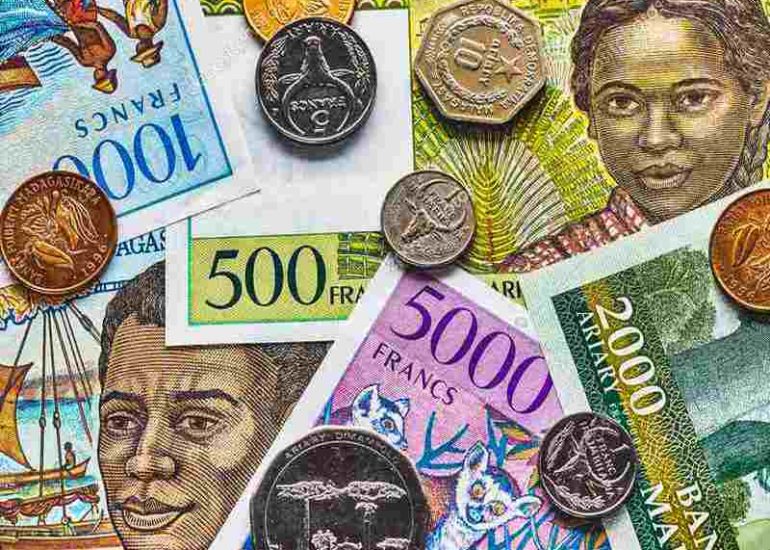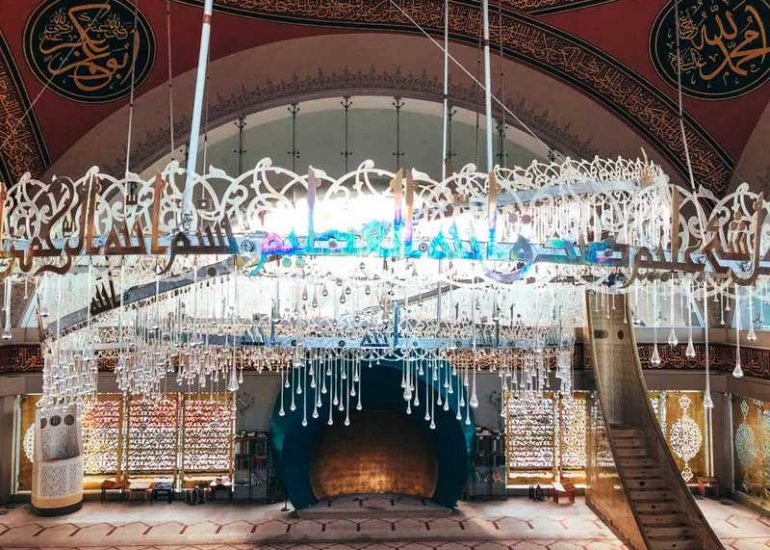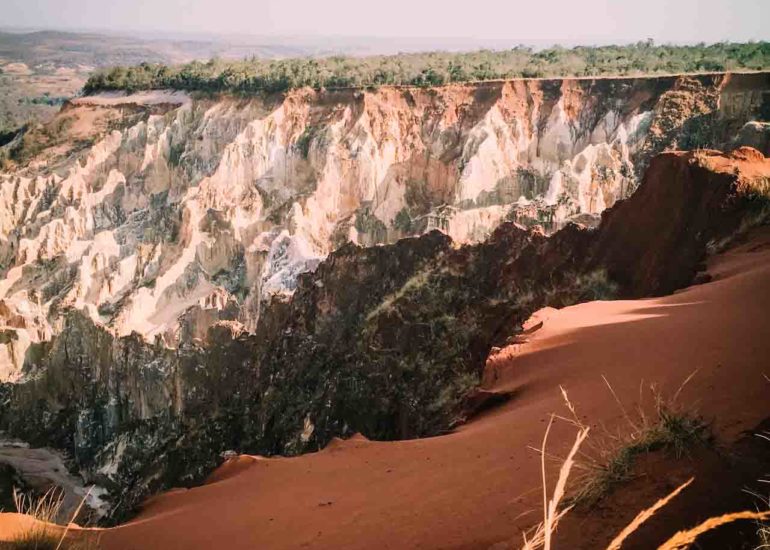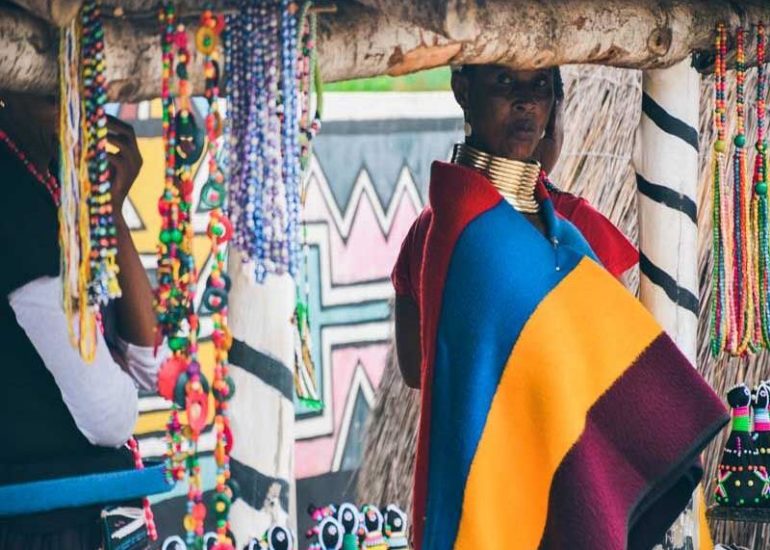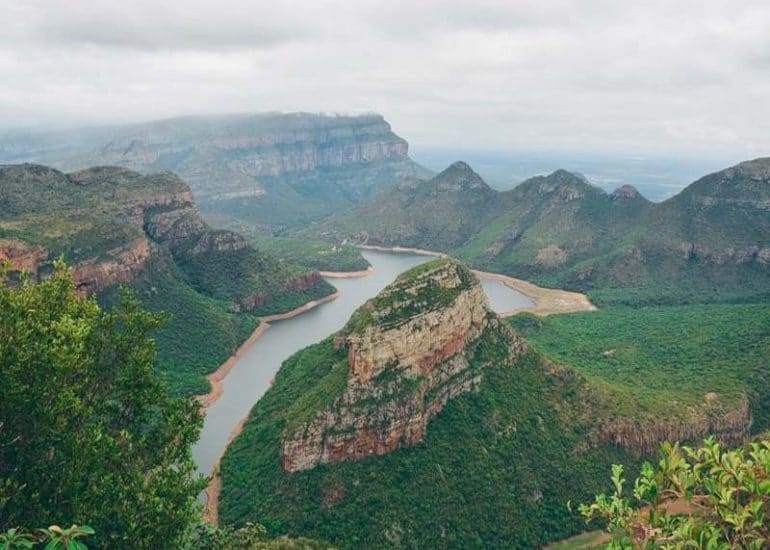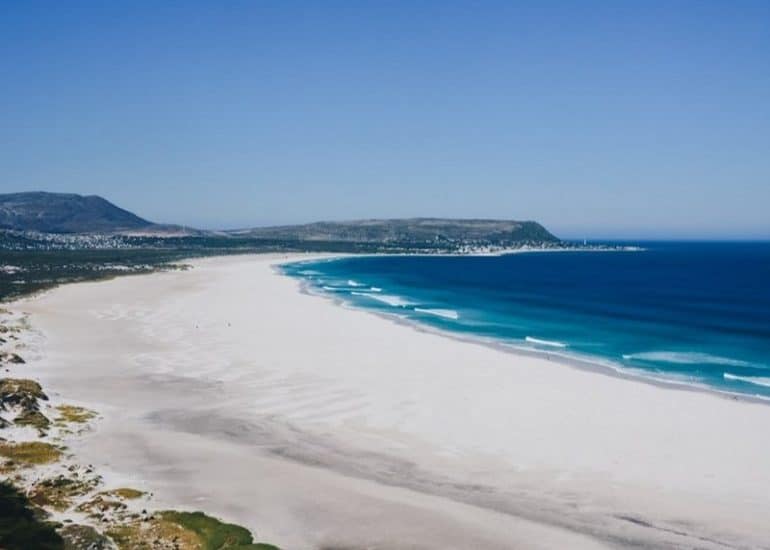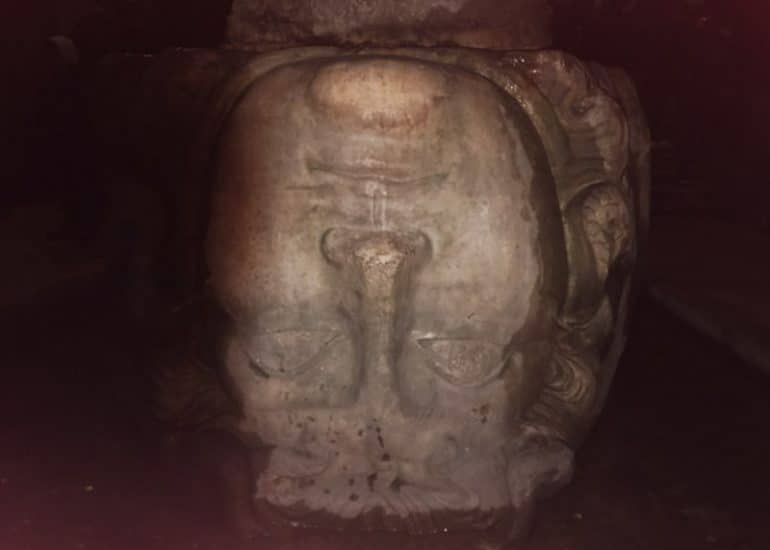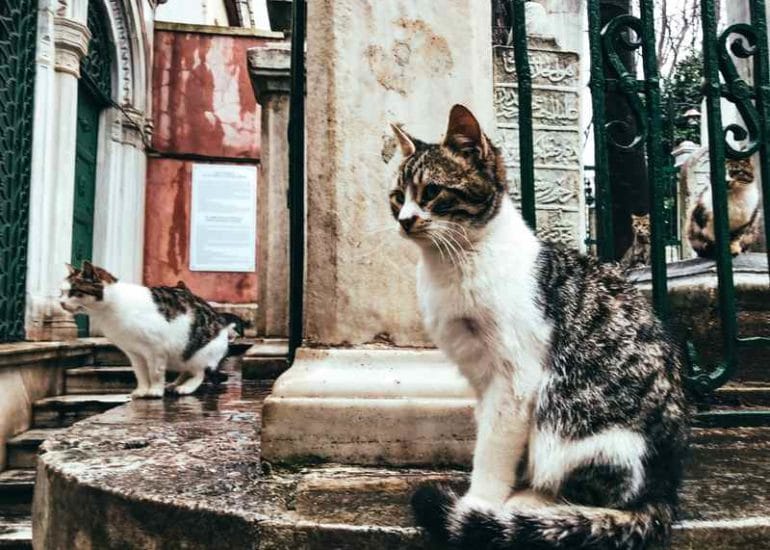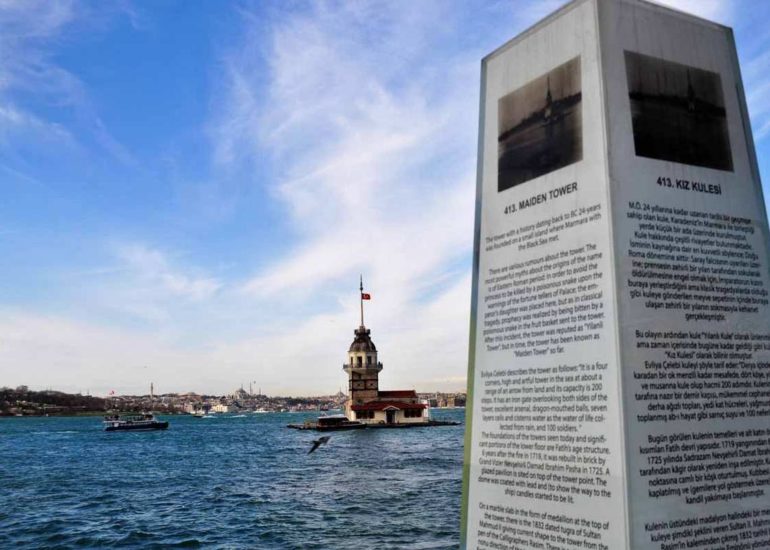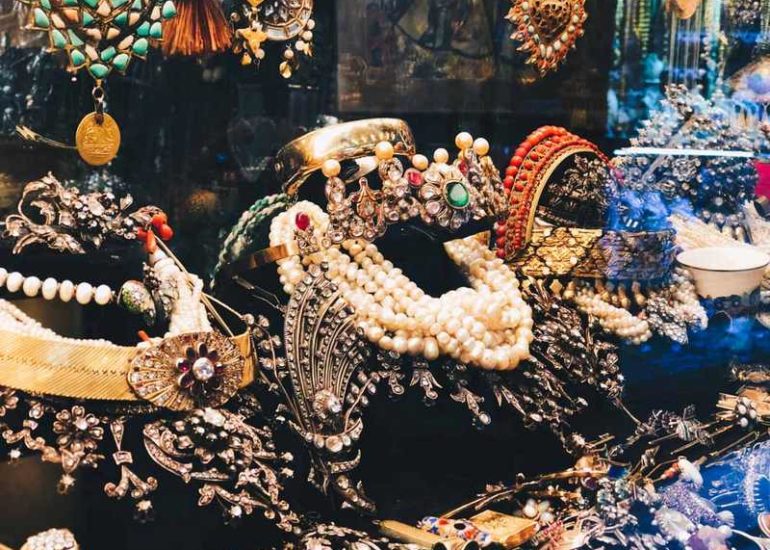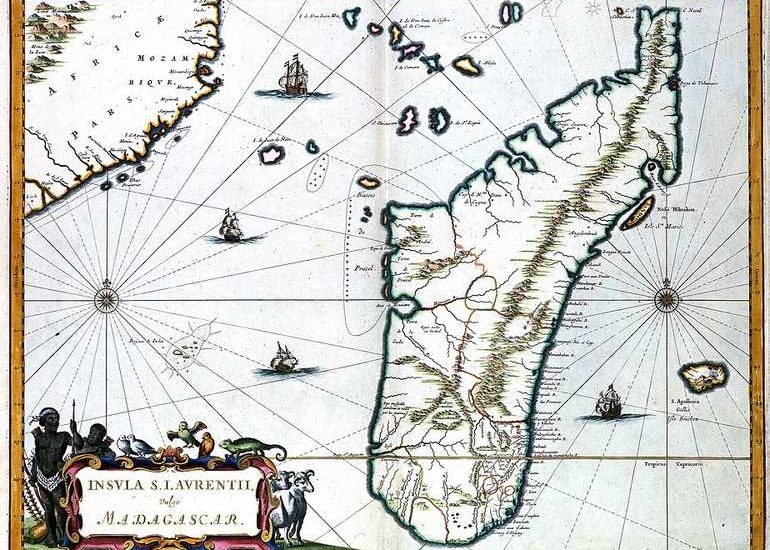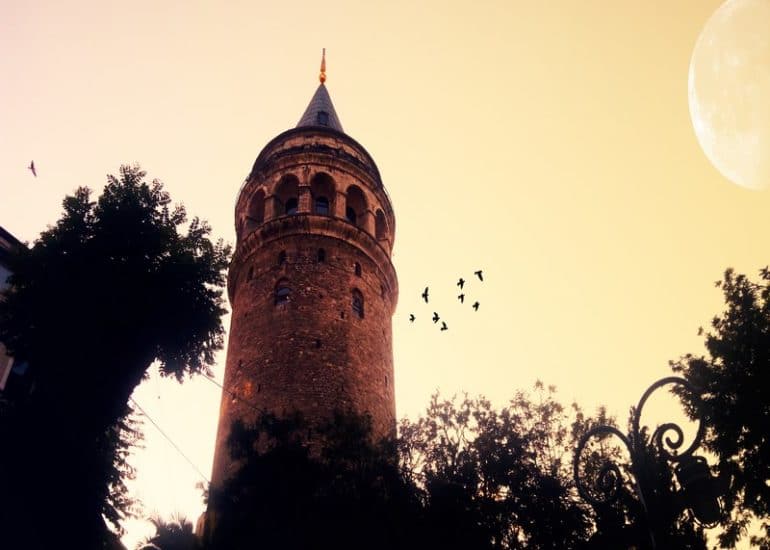Between the Red Circus, the Anjohibe Caves and Ankarafantsika National Park, the Mahajanga region looks like the American Far West.
An ideal place for playing adventurous tarzans and discovering an amazing wildlife.
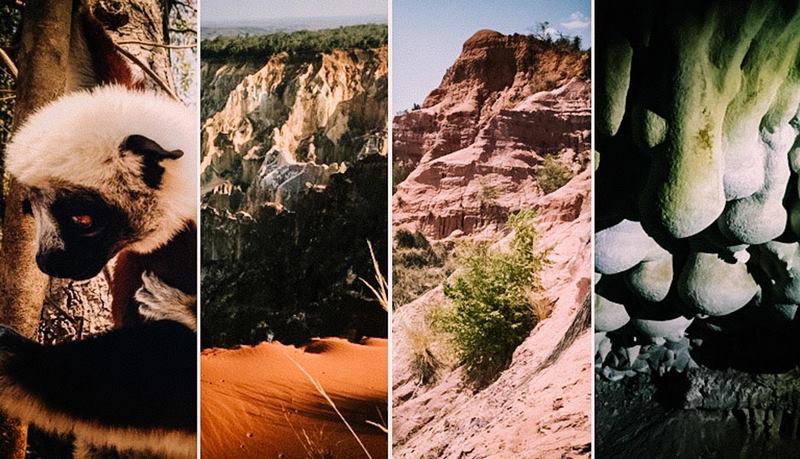
Anjohibe
The red circus
The site appears improbably after a short path. A good introduction to discover the country’s particular geological formations, since the circus dates back to the Quaternary Age, 1.8 million years !
Small canyon consisting of cliffs of clay sandstone with sedimentary layers of different colors, it's classified in the National Heritage. The visit won't take long. I regret not going there at sunset to observe the effect of changing reflections on the red cliffs, ...
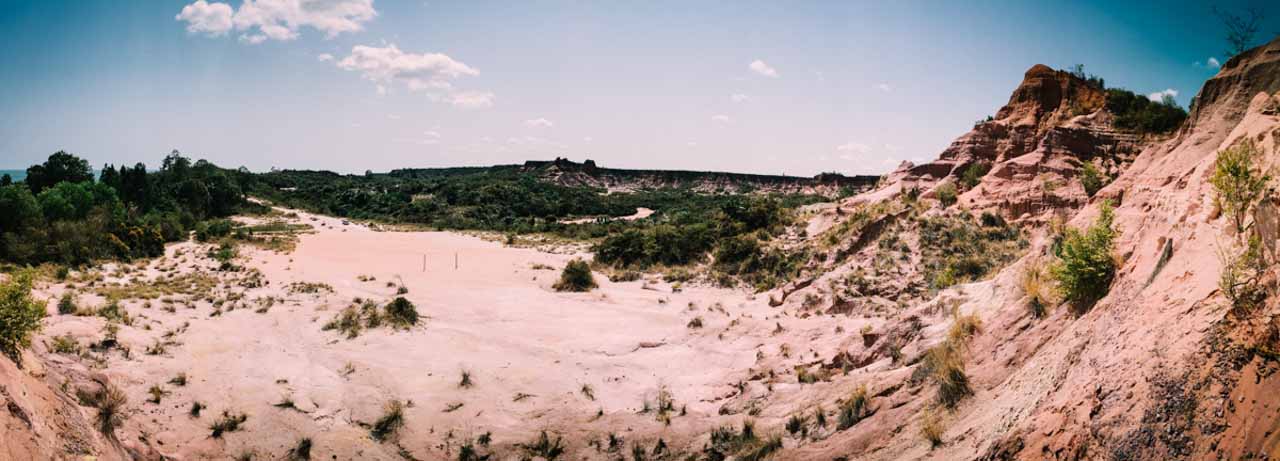
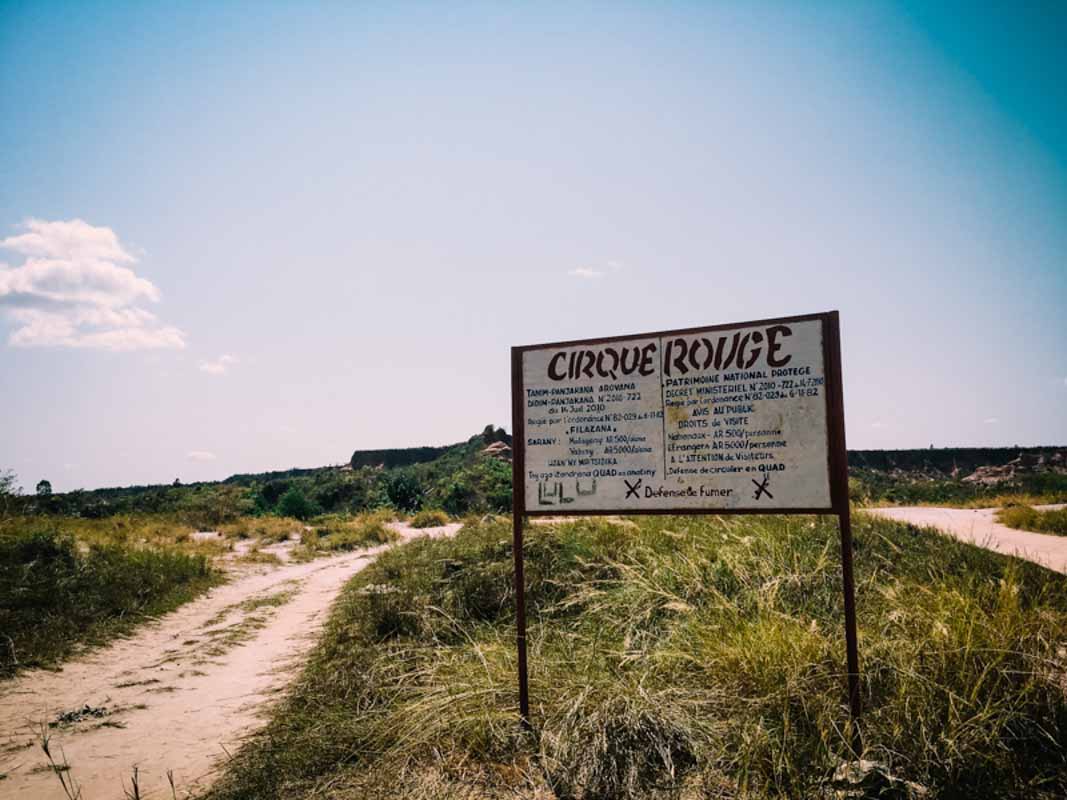
... but on this beautiful day, the deep, smooth blue of the sky gives rise to the ochre of the earth. The reliefs seem to split the azure.
The site looks like an arena waiting for an epic show.

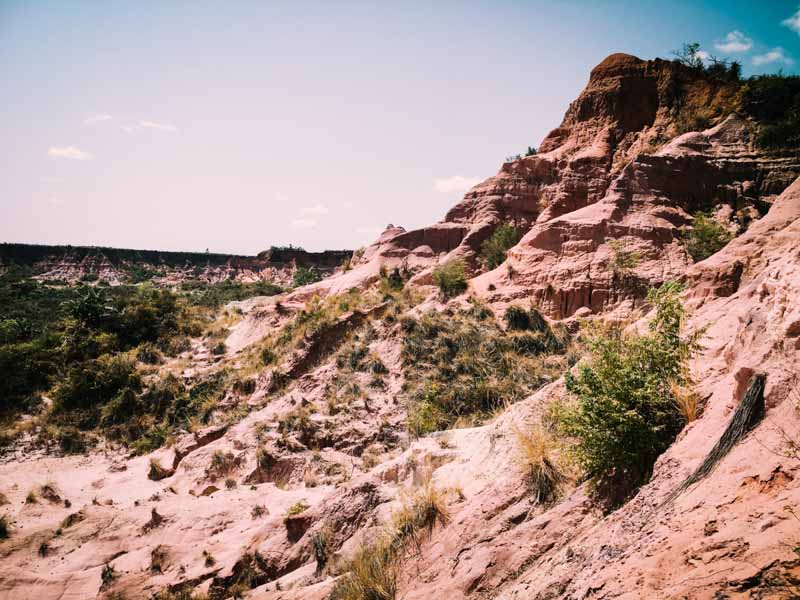
We can easily see the different sedimentary layers.
Located 12 km from Mahajanga, we visited the site before joining our 4 x 4 driver to reach the caves of Anjohibe.
The caves
Accessible only from Majanga, via a bad track where a 4 x 4 vehicle is indispensable.
The road never seems to stop.
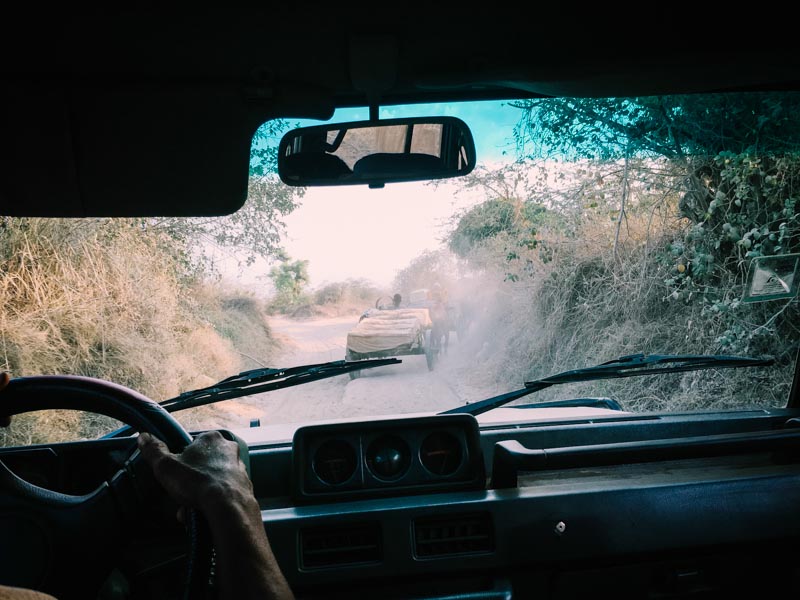
It's hard to imagine that people live there because the site seems so remote and hard to access, and yet we're making a stop in an ecolodge, appearing like a saving oasis. The ecolodge Papamena welcomes some travelers who come to spend a few days there to discover the region.
We easily feel the confidential and peaceful atmosphere of the place. Like a well-kept secret, a landmark of connoisseurs.


My first encounter with lemurs. A small colony is attracted by the smells of lunch.
Their soft coat and large round eyes give them the appearance of real plushes.
Their long tail reminds me the Marsupilami (yes I know, it doesn't exist)
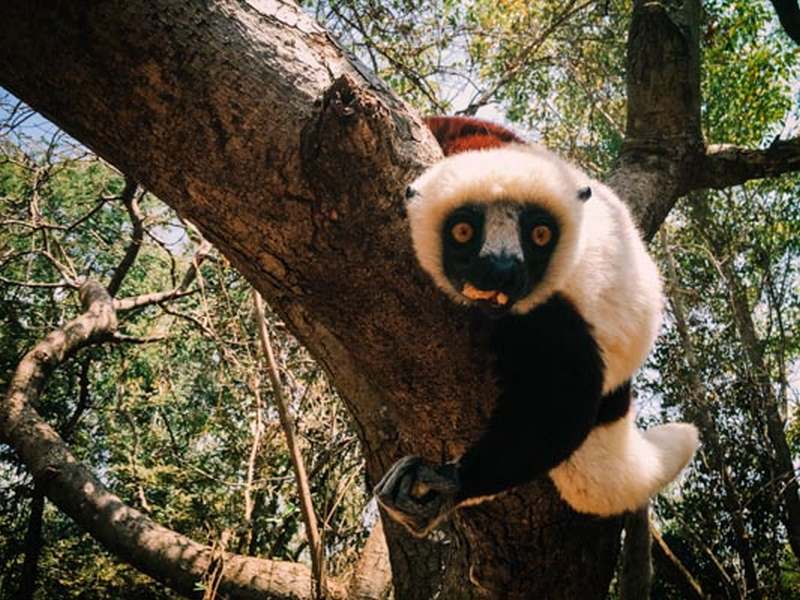
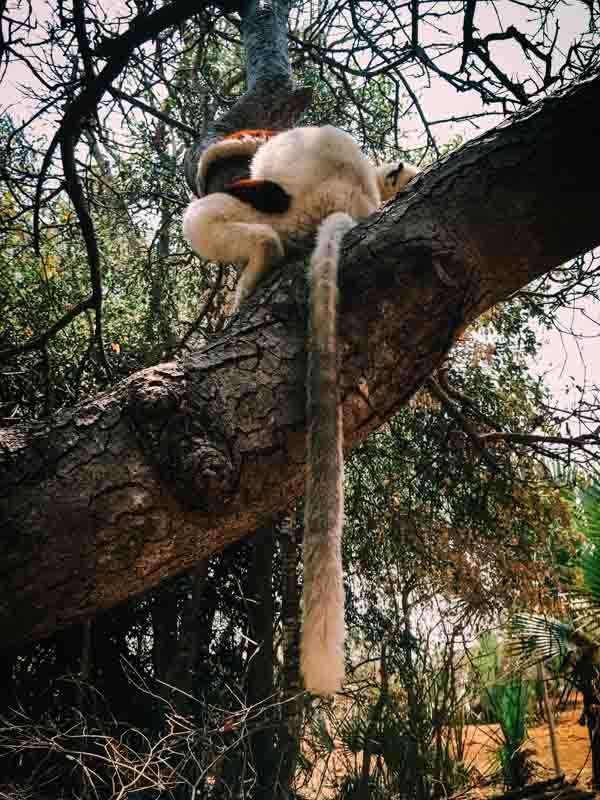
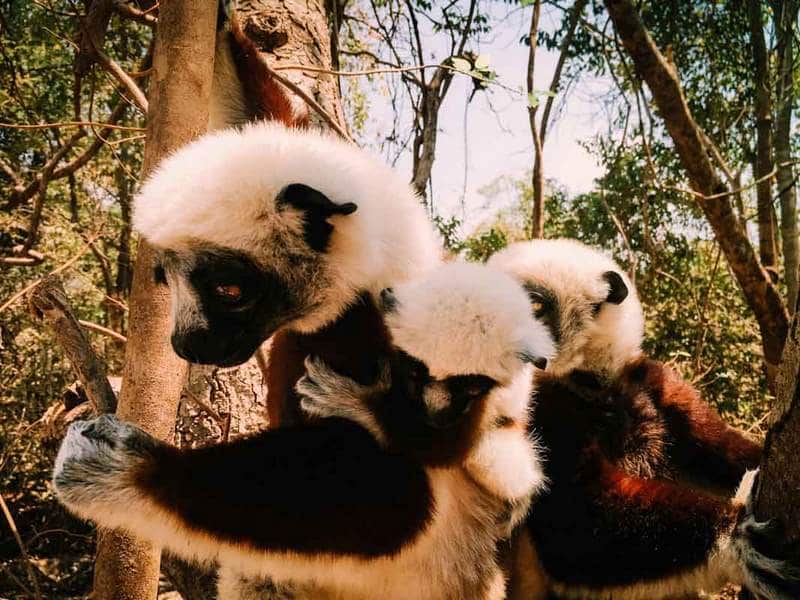
Lunch, then swim in the lodge’s natural pool.
By this warmth, in this wild vegetation, without anyone around except some young Malagasy diving to cool off, the site turns into a small personal paradise.
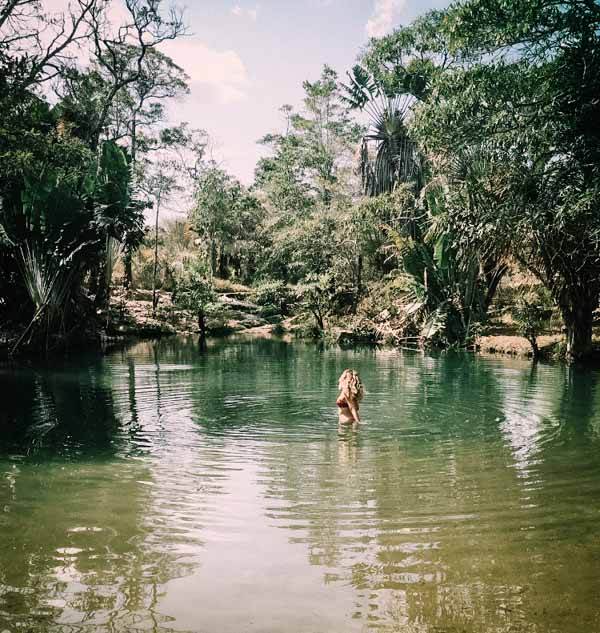
Then we head the caves, accompanied by a guide.

Not frequently visited due to a poor accessibility, the caves of Anjohibe are nevertheless worth the cost of banging one’s buttocks on the seat of the 4 x 4 for 6 hours (round trip). A guide is indispensable to avoid getting lost in them because their mazes are immense : only 5 galleries out of thousands have been explored according to our guide. They extend to the sea.

He begins by explaining to us that the Malagasy, during the time of the French colonization, hid there to avoid paying taxes.
The caves are amazing. In the galleries, beams of light sometimes pierce the darkness, illuminating the astonishing, sometimes erotic forms of stalagmites and calcareous concretions. Silence is king. We're alone, as if the site were reserved for us.
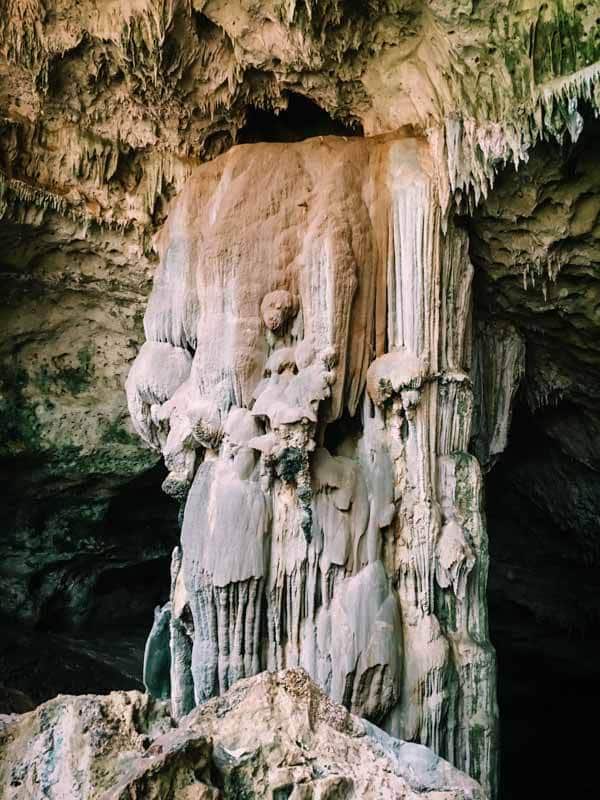
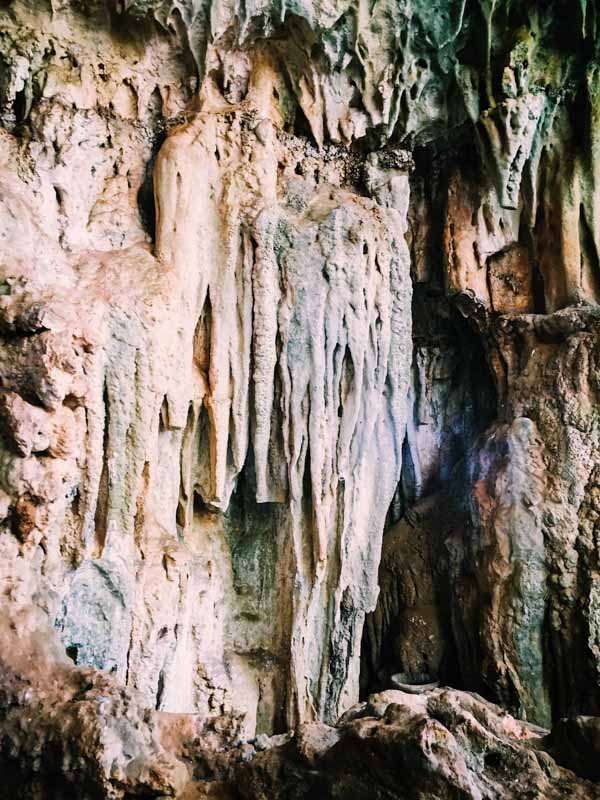
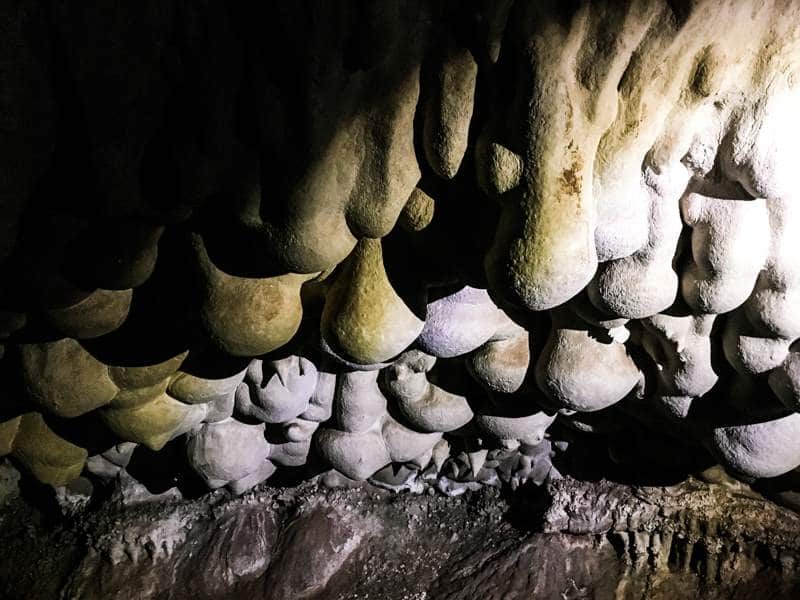
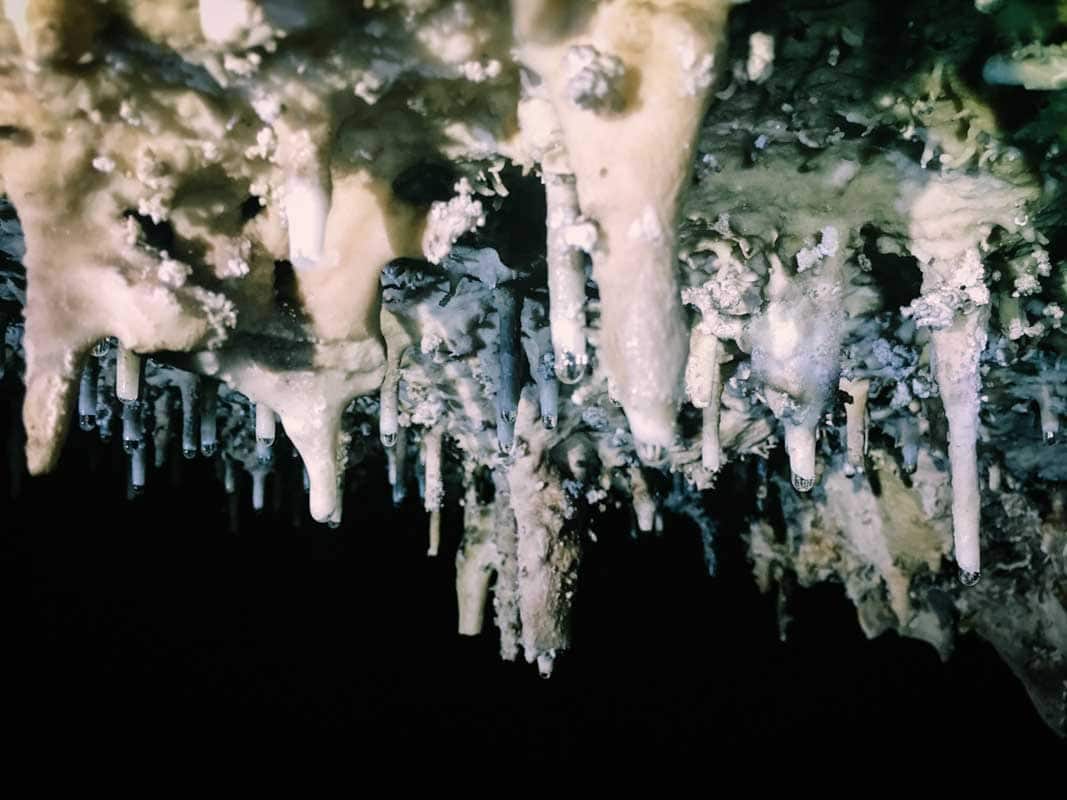
Vines to swing to, skeletons of animals : we feel like being in the Lost Ark of Indiana Jones.
This isn't so far from the truth : a careless tourist who left without a guide got lost and died.
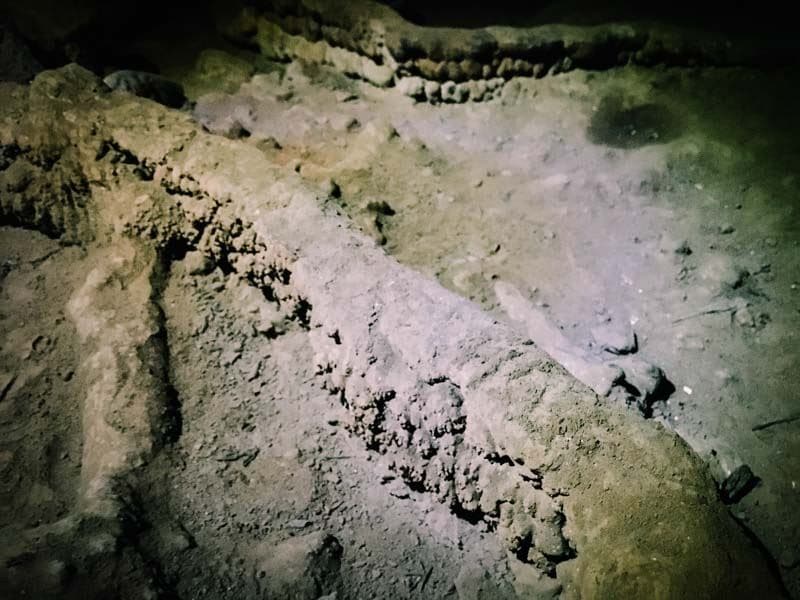
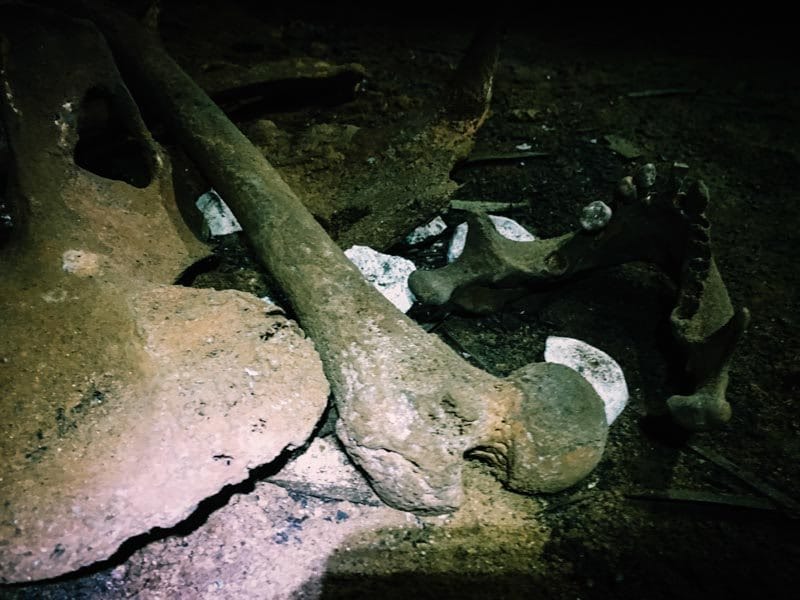

At the end of the course our guide disappears into a hole leading to a natural swimming pool.
Useful info
Our hotel. Hotel du Phare in Majanga. 19€ per night + 2 breakfasts. Basic but sufficient comfort and quiet surroundings.
Some travelers choose to spend a night in the Ecolodge Papamena, close to the caves, to visit the surrounding sites. For the sake of time, we have chosen to make the return trip in the day to visit the caves. Our driver find us a 4 x 4 driver from Majanga, 3 hours away.
Budget for the expédition. 51€/pers : driver (contact 03 31 25 87 94), 4 x 4, entrance and guiding for the cave
Equipment. Bring a flashlight with enough light. The caves are accessible from May to November.
Ankarafantsika National Park
136,000 hectares of dry forest with 8 species of lemurs including Microcebus – the world’s smallest primate, 129 species of birds, chameleons, iguanas, snakes, freshwater turtles, and endemic crocodiles. That’s a lot of people lol

I chose the Grande Boucle (big loop) circuit, which in one day combines the Coquereli and Lavaka circuits, the canyon with its panoramic view, and a night circuit, after dinner at nightfall.
Departure at 8 a.m. The guide gives his explanations according to the flora met.
There a plant having the appearance of cotton,
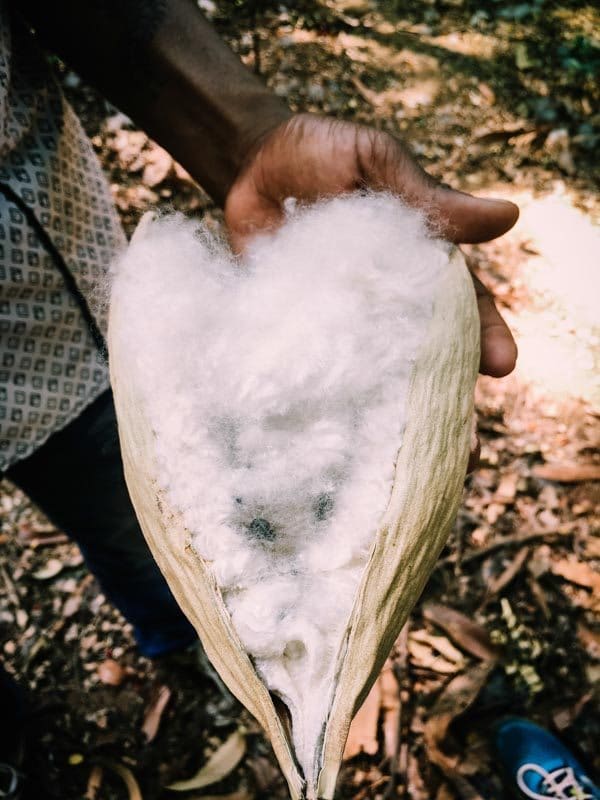
here an amazing insect, the Malagasy leafhopper, another endemic species. Larvae measuring a few millimeters deceive their feather predators by taking on the appearance of lichens to blend in with nature. Who has ever seen lichen walking?! That’s very surprising. It's also found in the Ankarana Park, and in the Amber Mountain.
Some chameleons, from the largest to the smallest (we will see an even smaller one in another park).

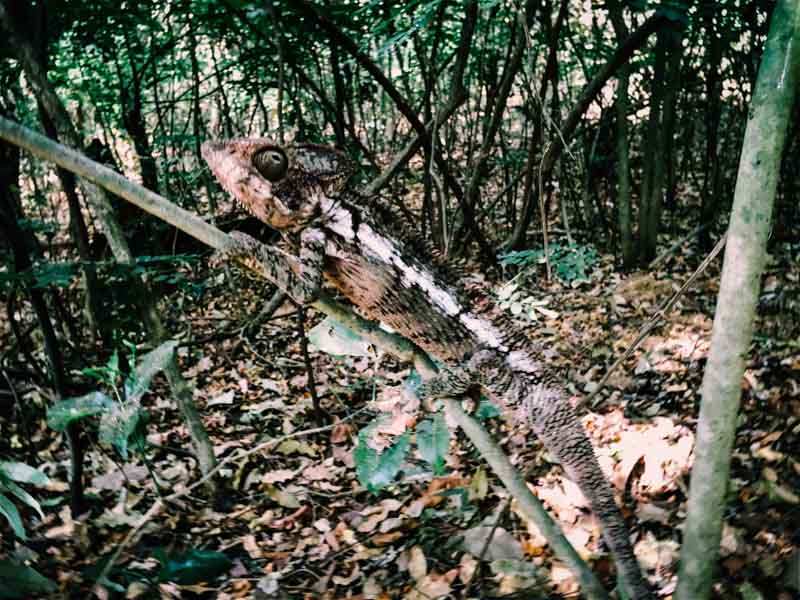
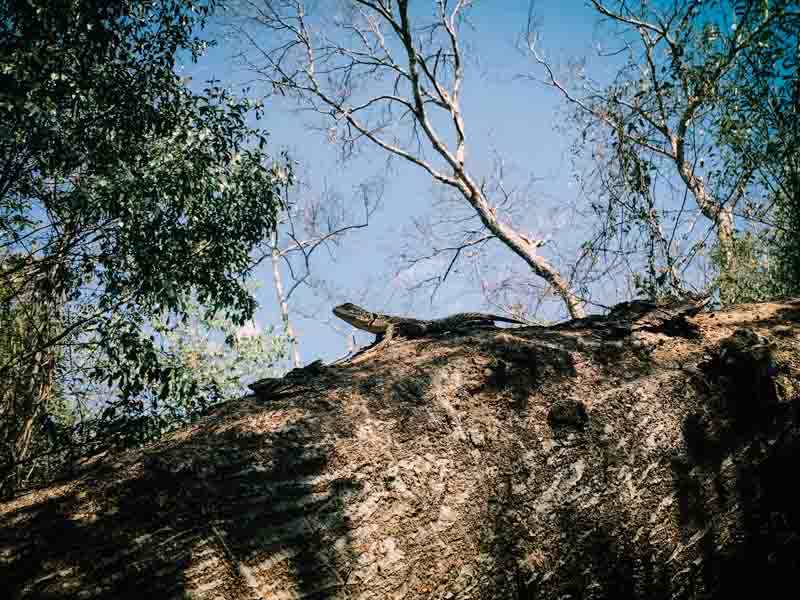
And very quickly the first lemurs. Curious to see us, they nevertheless keep their distances.
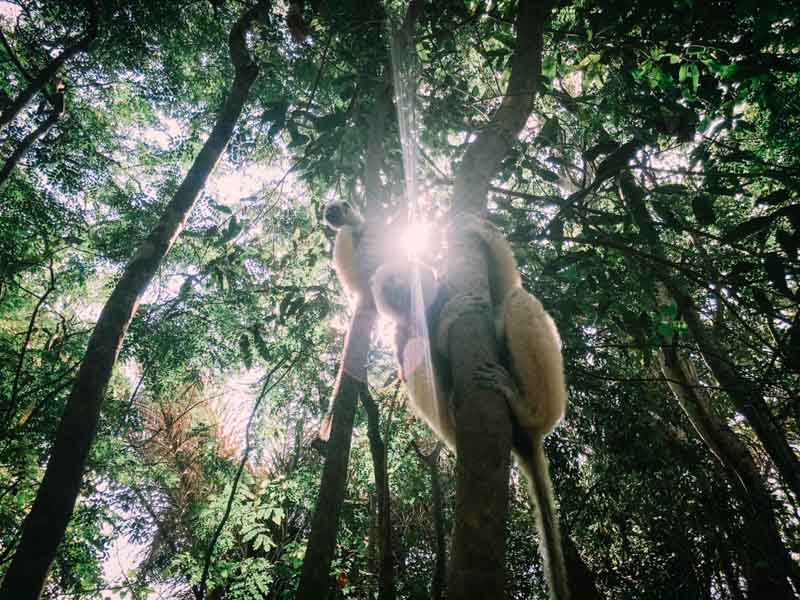
The heat is stifling, the trees in this dry season offering very little shade.
We cross a savannah in the direction of the canyon, heralding a change of color.

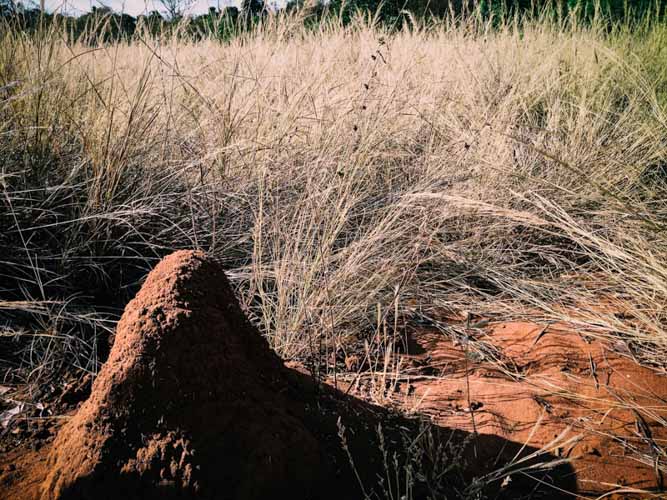
When you arrive at your destination, thirst and warmth are forgotten in front of this magnificent view.
The photographs seen before my departure hadn't prepared me for this grandiose and vertiginous relief.

Erosion will gradually enlarge the canyon.
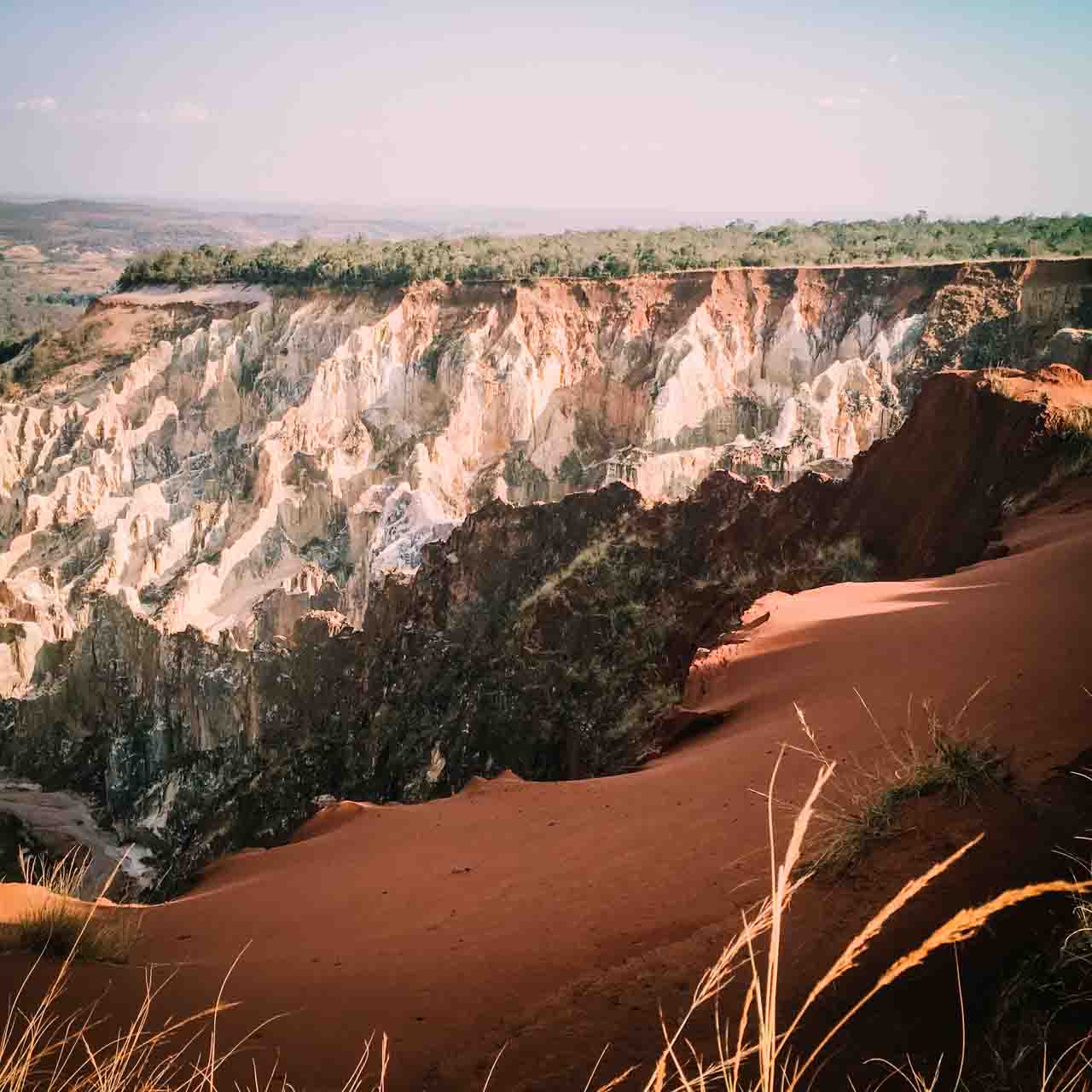
We’ll be back at 4pm.
Quick rest in the bungalow. Rehydration necessary. The red of the earth penetrated into my socks.
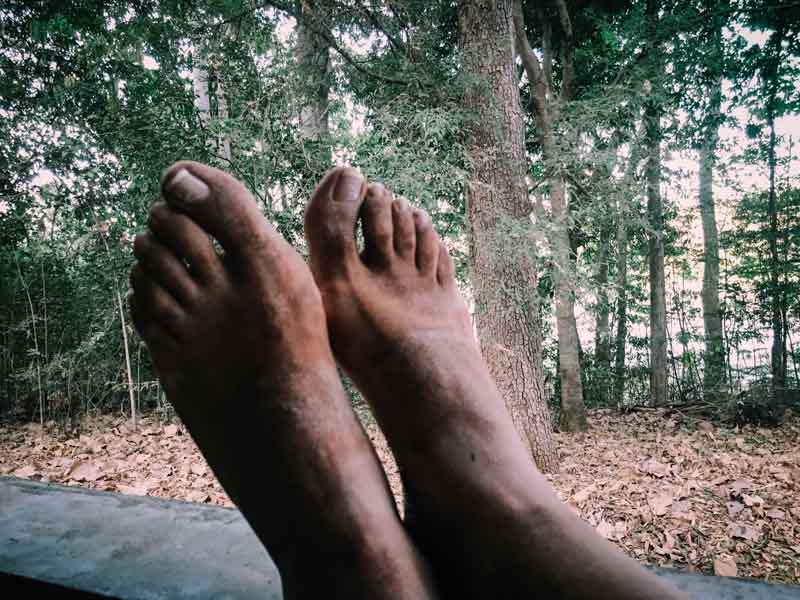
The night tour :
Quick dinner then we started again a 1 hour circuit at nightfall, which looks like a hunt for Marsupilami, in other words the "cute microcebus".
This little lemur with a featherweight (75 grams) is difficult to find because he sleeps during the day and hides at the top of the trees to escape from its predators, including the fossa, much less cute... The only way to see it is to spot its huge round amber eyes which the light of the headlamps illuminates in the night. The microcebus sees blurred during the day but perfectly at night.
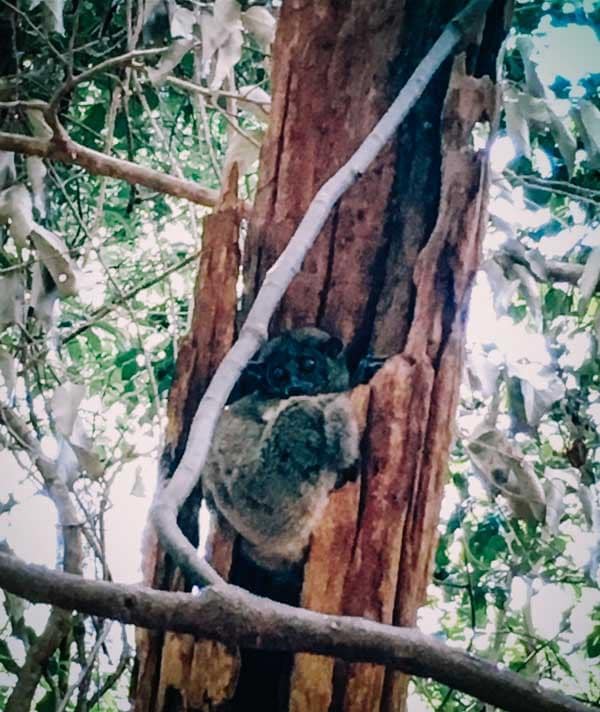
A microcebus, by day, in another Malagasy park. The poor boi was awakened by the group of tourists passing in front of us.
It spends the day in the hollows of trees or in nests, sheltered from its predators.
The fossa, between puma and mongoose
Madagascar, with its record rate of endemicity, is home to unusual animals.
Here we have a miniature version of a puma but with a more elongated face, which reminds the mongoose. It's the largest carnivorous mammal in the country. You won’t find it anywhere else in the world, except in a few zoos.
Its favourite food is the lemur (big or small), which it doesn't hesitate to find while climbing the trees. This little chicken thief isn't really appreciated by the population, but isn't hunted because he is known to “ feed on the bodies of ancestors ”.
In other words, this carnivore is able to feed on granny if you don't bury her deep enough in the forest ! Glurp! We understand better why consuming it, is fady, in other words prohibited.
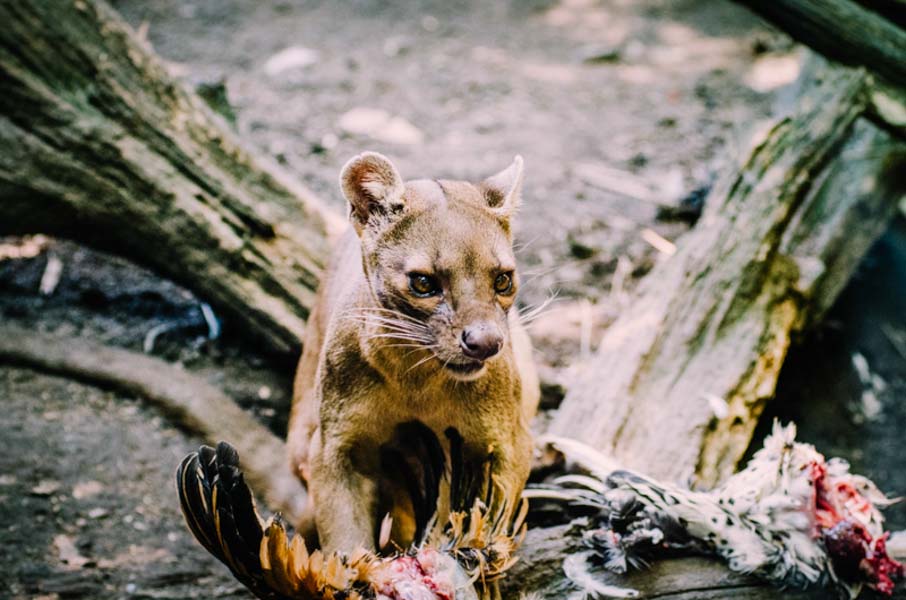
Useful info
In all the parks of the country, you willl have to pay the entrance fee + the mandatory guide. The price of this one varies according to the number of people.
The rates can be consulted on the website of the national parks, to which it will be necessary to add inexpensive taxes (of the order of 2000 MGA/pers is 0.50 €).
Our hotel. The Ankarafantsika Ecolodge, located on the edge of the park. You won't find any better location. Bungalows without internet connection : just you and nature, the sun, the noise of birds. Restaurant and bar on site.
We had booked our room by phone a few days before, and our driver came by to reconfirm verbally. Despite this, our bungalow wasn't reserved. Management happily granted us a bungalow and everything went well afterwards. The reservation center being in Majunga and the lodge having no phone, this kind of problems can happen, you have to know it. But in the end everything was settled, even if we didn'’t know how (a bit like in India for those who know lol).
→ Distance from Mahajanga : 2h (114 km)
Budget. Hotel and meals : 26€. Park tour (Lavaka + Coquereli circuit): 22€. Night tour: 5€ (to be booked and paid directly from the guide)
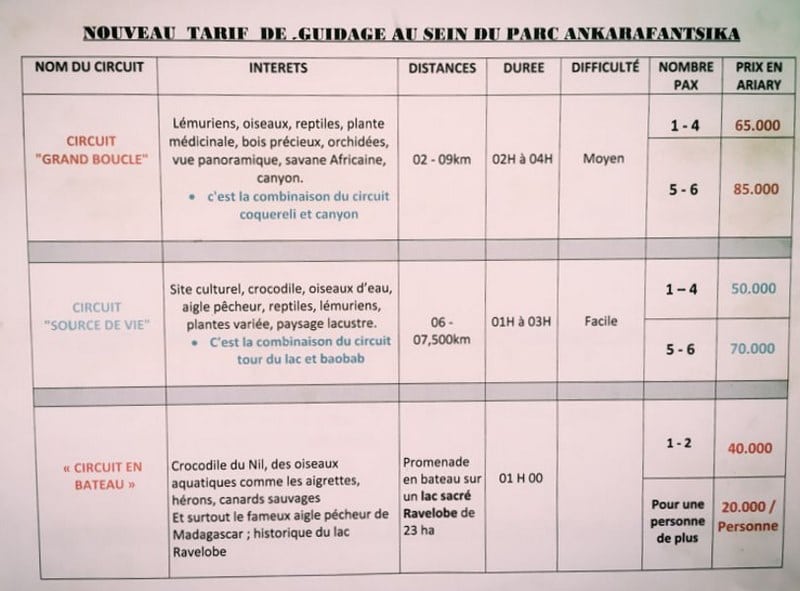
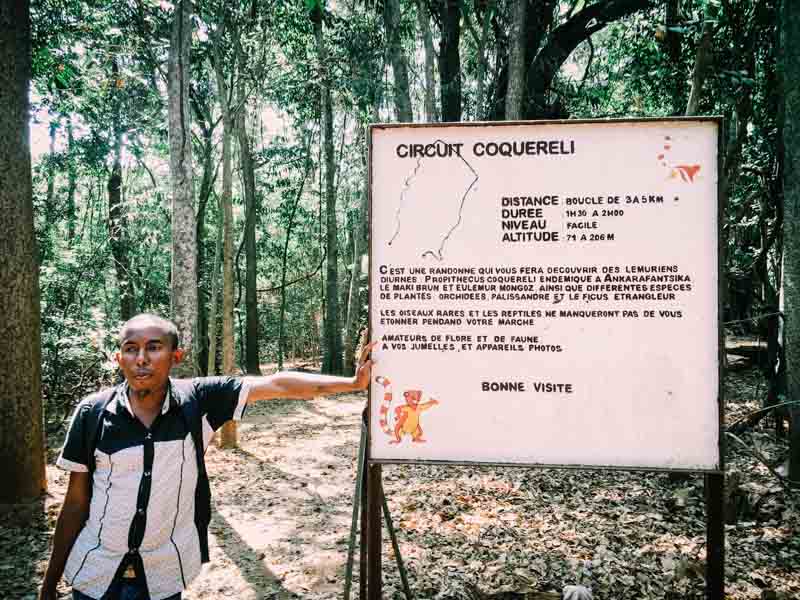
Equipment. Flashlight if you plan to make the night tour. The heat is intense : even if it weighs, take at MINIMUM 2 to 3 large bottles of water per person for the big loop.
Antsohihy, a step city
In a country as large as Madagascar, long journeys require stages in some cities that are less attractive or almost non-existent. Antsohihy is one of them.
On the other hand, the most beautiful road leads from Antsohihy to Ankarana Park. But also the most difficult : many holes on the road, or rather a road among the holes!
